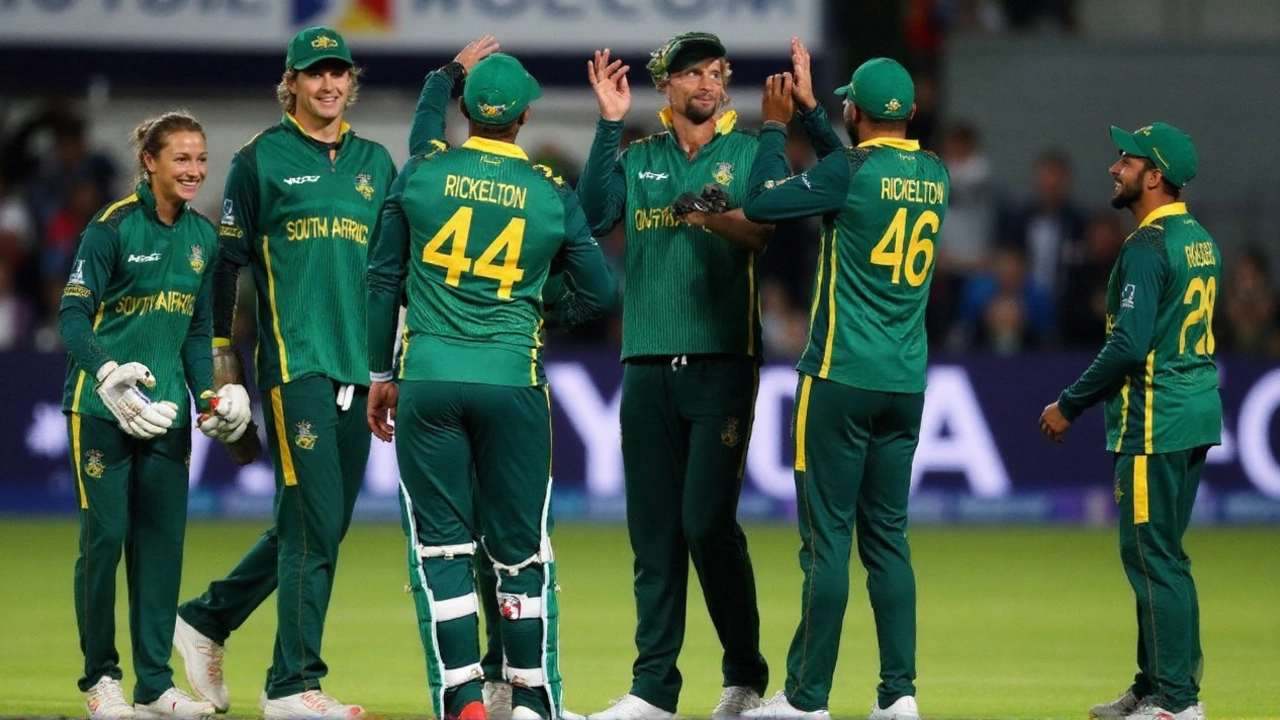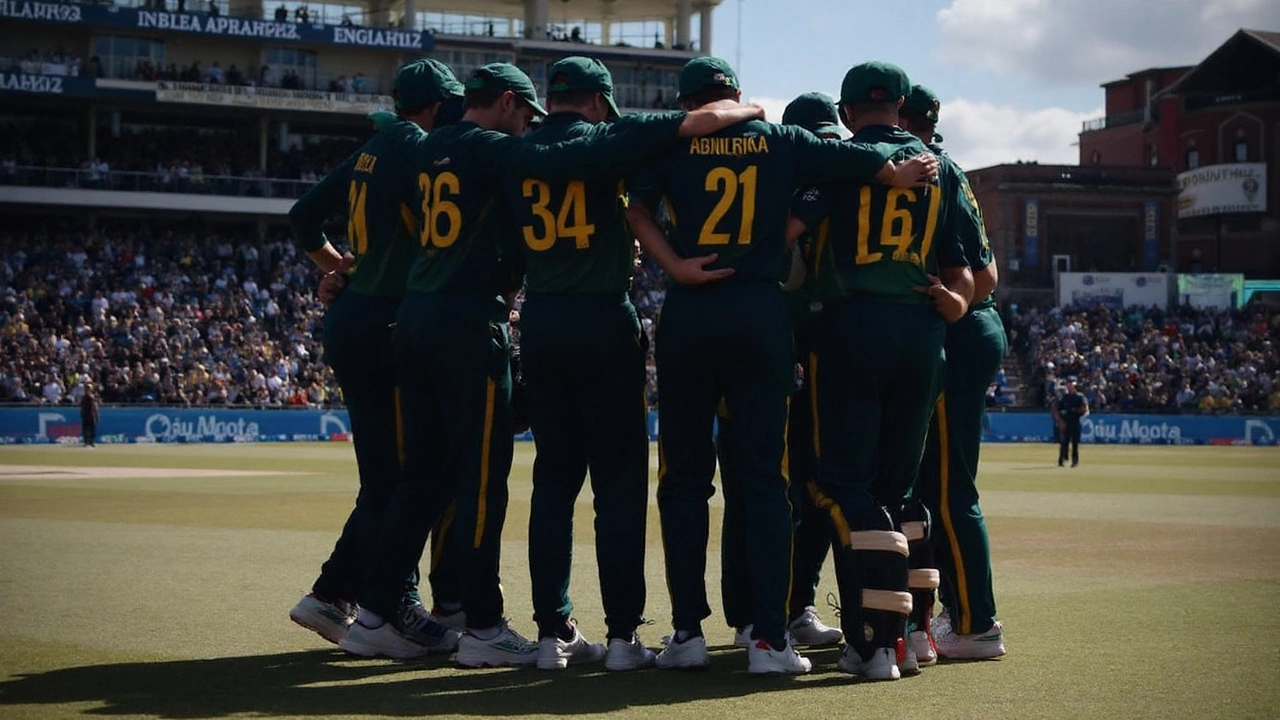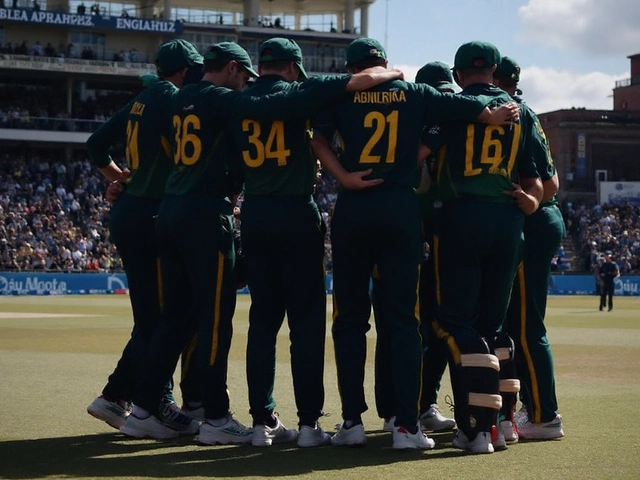England bowl first at Lord’s as the pressure spikes
Five runs. One ball. Lord’s held its breath, and South Africa did not blink. In a gripping second ODI that had everything but a fairy-tale home finish, England fell short by the slimmest of margins, handing Aiden Markram’s side the series with a 2-0 lead and a game to spare.
The script started with a bold call. Under heavy morning cloud and after a 15-minute rain delay, England captain Harry Brook won the toss and chose to bowl. On this ground, with that slope and a new white ball in damp air, the move made sense. Early swing has long been the lure at Lord’s, and England rolled out Jofra Archer and the recalled Saqib Mahmood to hunt it.
Both teams shuffled their XIs, and the choices mattered.
- England: Out went fast bowler Sonny Baker after a bruising debut at Headingley (0-76 in seven overs and out first ball). In came Saqib Mahmood, offering skill with the new ball and control at the death.
- South Africa: Matt Breetzke replaced Tony de Zorzi, who suffered a hamstring injury. Wiaan Mulder fell ill on match day, so left-arm spinner Senuran Muthusamy stepped in. Kagiso Rabada remained sidelined with an ankle issue.
The setting added a layer of subtext. South Africa returned to the home of cricket barely ten weeks after lifting the World Test Championship here against Australia. Different format, same poise: they absorbed pressure, trusted their methods, and outlasted England once again.
England’s bowling plan was clear from ball one: hit a fuller length, use the seam, and let the slope do part of the work. Archer threatened with pace from one end; Mahmood angled the ball across the right-handers from the other. Brydon Carse held the middle with hard lengths, while Adil Rashid looked for drift and dip once the lacquer wore off. The surface had that early-season feel despite the date—lively enough to keep batters cautious, but not treacherous.
South Africa responded with composure. Ryan Rickelton and Temba Bavuma were compact through the early movement, Aiden Markram rotated smartly, and the middle order picked moments rather than overs. This was not a day for fireworks from ball one; it was a day to line up the straight boundary, pick off the square gaps, and keep wickets in the bank. When England tried to rush them with pace and bouncers, the Proteas rode it out, turned singles into twos, and kept the innings on a slow, steady boil.
Rashid’s spell mattered. He tightened the middle overs, dragged the run rate down, and forced South Africa to work angles rather than launch. But the balance of the innings stayed even because Markram’s batters refused to panic. Muthusamy’s inclusion, on paper a like-for-like swap for Mulder in terms of team balance, also added calm. With Keshav Maharaj in tandem later, it set South Africa up for a late squeeze with the ball—if they could post something competitive first.
They did. Without chasing a headline number, South Africa built an innings that always felt awkward to overhaul. It was the sort of target that makes captains fidget: neither imposing enough to relax, nor light enough to cruise. Lord’s can do that—by the halfway point of the chase, every dot ball had an echo.
England’s pursuit was anchored by Jos Buttler, who looked a step ahead of the game from the moment he arrived. He took the sting out of the middle overs, used the crease to mess with lengths, and found the square boundaries when South Africa dropped short. His 61 became the platform England needed—but also the pivot on which the match would turn.
The dismissal came from Lungi Ngidi, and it felt inevitable the moment the ball left his hand. Pace off, undercut, just a shade deeper than Buttler expected. The timing vanished. The contact wasn’t clean. One mistimed stroke later, South Africa’s huddle broke into a sprint. In a match this tight, that was the punch England could not absorb.
Without Buttler marshalling the chase, England lost shape. South Africa switched to a suffocating plan: Maharaj bowled his stump-to-stump spell with fields set to protect the pockets, the seamers targeted hard lengths into the pitch, and the singles became loud, costly events. Nandre Burger’s pace hurried strokes, and Ngidi kept mixing his cutters and slower balls like a dealer who just wouldn’t show the same card twice. England stayed alive, but not quite in control.

The turning point and what it tells us
That single ball from Ngidi spoke to South Africa’s clarity under pressure. They chose patience over panic and execution over ego. When the square boundaries tightened late and the ball softened, they doubled down on taking pace off. England, armed with power, were asked to manufacture pace on a surface that had started to hold. The mismatch showed up in dots and mishits.
Ngidi’s final overs were a mini masterclass in death bowling: release point unchanged, cross-seam and off-cutters disguised, fielders placed for the miscued pull and the misjudged drive. Maharaj’s middle-overs control made those options possible—he had protected the seamers’ margin for error by denying England a runway before the last five. That’s smart team bowling in white-ball cricket.
England didn’t get everything wrong. The decision to bowl first fit the conditions after the morning rain. Mahmood’s return gave them new-ball craft and late control; Archer hit the splice hard and looked fitter for the work. Rashid’s variations were a genuine threat. The issue was the handover from platform to finish—once Buttler fell, no one seized the moment with him gone. Against a side as well-drilled as South Africa, that hesitation is fatal.
Selection played its part, too. Moving on from Sonny Baker after a harsh debut was pragmatic, not punitive. Lord’s rewards precision, and Mahmood offered it. On the other side, South Africa’s enforced changes looked like choices. Breetzke slotted in without fuss, and Muthusamy gave Markram flexibility: left-arm spin into the rough, batting insurance at No. 7 or 8, and tidy fielding. Add Maharaj’s calm and Ngidi’s nerve, and the spine held even without Rabada’s star power.
Context matters for the Proteas. They walked back into Lord’s with the memory of a Test mace lifted on these steps and played as if the building itself reminds them how to close. Markram captained with a quiet pulse—no drama, no panic, just good fields and timely bowling changes. It’s hard not to see a team growing into a clear one-day identity: high skill with the ball, batting depth used for tempo rather than fireworks, and excellent game awareness in clutch moments.
For England, the questions are straightforward and solvable. Can they stretch the middle overs without burning wickets? Can the top five turn starts into a match-winning anchor so Buttler doesn’t have to be Plan A and Plan B? And how do they turn pressure overs into scoring overs when pace off becomes the theme? Those are tactical tweaks, not identity crises.
The atmosphere matched the stakes. A full house went from murmurs to roars to a hush as the final over unfolded. It’s rare to feel thousands of people think the same thought at the same time, but Lord’s did: one clean hit and this flips. South Africa didn’t allow that clean hit. The last ball came and went, and the scoreboard froze with a five-run gap that felt much larger in the moment.
The series picture is now uncomplicated: South Africa lead 2-0 with one to play. England have a chance to avoid a sweep and test combinations for the months ahead. South Africa can try different roles, manage workloads, and keep sharpening a bowling unit that just defended a tight target at a ground where most chases, when set up well, tend to get home.
Some footnotes matter for the road ahead. Rabada’s ankle remains the big South African injury watch, but in his absence Ngidi has embraced the finisher’s job, and Burger has brought bite through the middle. De Zorzi’s hamstring and Mulder’s illness forced changes that unexpectedly expanded the bench. That’s not window dressing; it’s depth in action.
On England’s side, Archer’s overs are investments as much as outputs. Mahmood’s return is a bright spot. The spin slot is solid with Rashid, but auxiliary overs—Jacks, Bethell on certain surfaces—could ease pressure on the frontliners. And with Harry Brook captaining, there’s the added layer of leadership reps you only gain in games like this: messy, tense, decided in the last 30 minutes under lights.
Line-ups for the record underline the moving parts at play:
- England XI: Harry Brook (c), Jamie Smith, Ben Duckett, Joe Root, Jos Buttler, Jacob Bethell, Will Jacks, Brydon Carse, Jofra Archer, Adil Rashid, Saqib Mahmood.
- South Africa XI: Aiden Markram (c), Ryan Rickelton, Temba Bavuma, Matt Breetzke, Tristan Stubbs, Dewald Brevis, Senuran Muthusamy, Corbin Bosch, Keshav Maharaj, Nandre Burger, Lungi Ngidi.
In the end, the match hinged on a veteran’s trick at the right time. Ngidi held his nerve, rolled his fingers, and took Buttler out on 61. The chase unraveled just enough for South Africa to squeeze through. After the final ball, the Proteas celebrated a series won; England trudged off with what-ifs and a reminder that margins are everything. That’s the fine print of this rivalry—England vs South Africa keeps finding new ways to stay dramatic.




